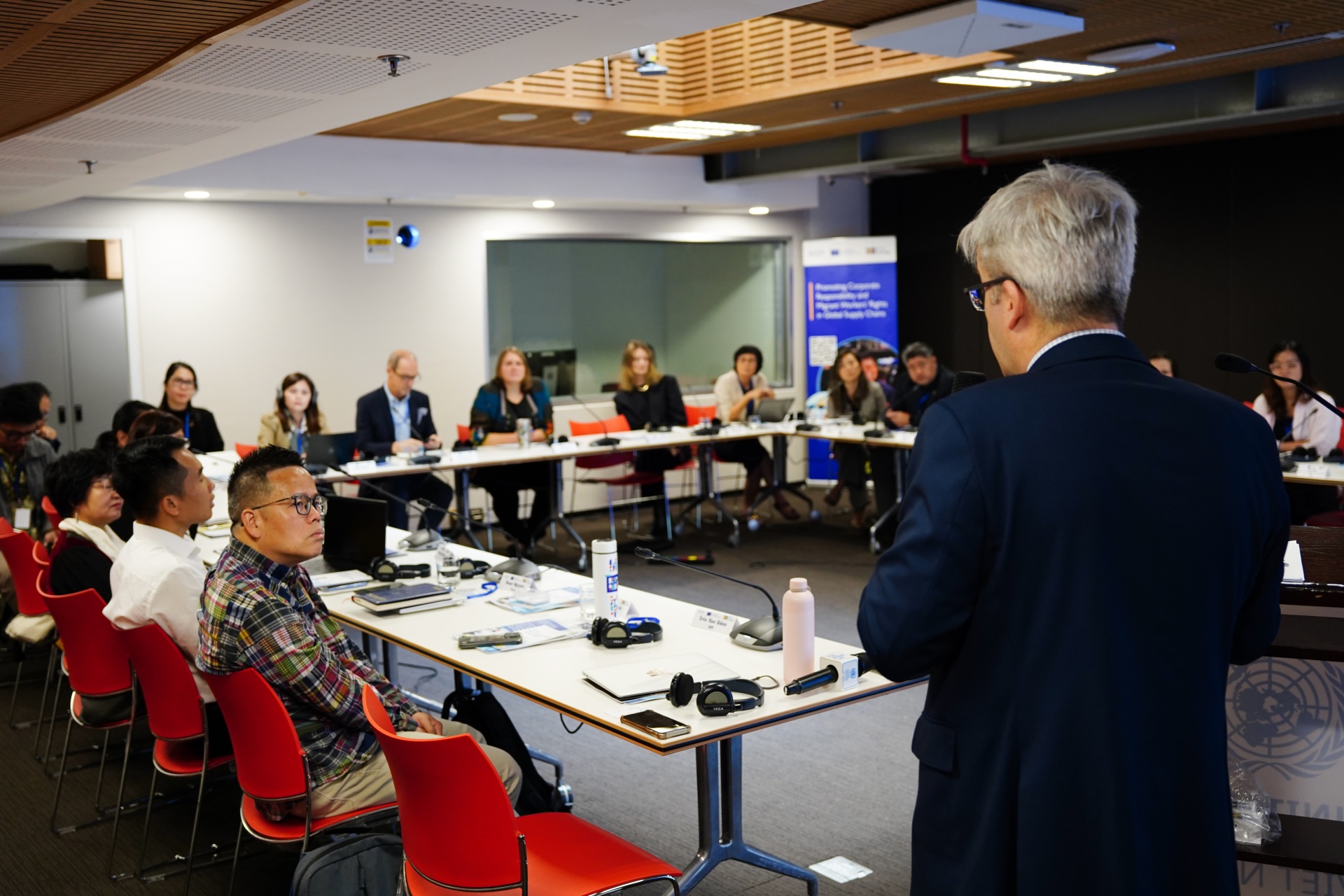Rethinking Our Cities from the Ground Up – Earth Day

Report on Sustainable Urban Development and Building Efficiency
Introduction: Aligning Urban Growth with Sustainable Development Goals
As global populations increasingly concentrate in urban centers, the development of vertical infrastructure such as skyscrapers presents both a challenge and an opportunity for achieving the Sustainable Development Goals (SDGs). With over 50% of the world’s population living in cities—a figure projected to increase by 2.4 billion by 2050—the environmental impact of buildings is a critical concern. This report examines strategies for mitigating the environmental footprint of skyscrapers, focusing on their alignment with key SDGs, including SDG 7 (Affordable and Clean Energy), SDG 9 (Industry, Innovation, and Infrastructure), SDG 11 (Sustainable Cities and Communities), and SDG 13 (Climate Action).
The Role of Buildings in Global Energy Consumption and Climate Action
The building sector is a significant contributor to global energy consumption and greenhouse gas emissions, directly impacting progress toward SDG 13 (Climate Action).
- Energy Consumption: Buildings account for approximately 30-40% of global energy consumption.
- Greenhouse Gas Emissions: This high energy demand makes the sector a primary source of emissions linked to climate change.
- Urbanization Impact: The rapid growth of urban populations exacerbates these challenges, increasing demand for residential, commercial, and industrial infrastructure.
Improving building energy efficiency is therefore a critical strategy for advancing SDG 7 and SDG 11, delivering environmental, economic, and health benefits while creating resilient and sustainable urban environments.
Strategies for Enhancing Building Sustainability
A multi-faceted approach combining traditional design principles with modern technology is essential for developing sustainable buildings that support the SDGs.
Foundational Design and Technological Integration
Achieving efficiency involves a combination of established practices and innovative technologies, contributing to SDG 9 by fostering sustainable infrastructure.
- Passive Design Strategies:
- Natural Ventilation: Strategic building placement to maximize natural airflow can reduce cooling costs by up to 50%.
- Natural Lighting: Optimizing the use of natural light can decrease electricity costs for lighting by 40%.
- Modern Technological Solutions:
- Improved insulation materials.
- Smart air, lighting, and appliance systems designed to minimize energy use.
Energy Generation and Net-Zero Construction
The evolution toward net-zero and net-positive buildings represents a significant step in achieving SDG 7. These structures are designed not only to minimize energy consumption but also to generate their own power through on-site renewable systems.
- Net-Zero Buildings: Generate enough renewable energy on-site to meet their own annual energy consumption requirements.
- Net-Positive Buildings: Generate more energy than they consume, contributing surplus power back to the grid.
- Renewable Technologies: Integration of solar photovoltaic panels, geothermal heat pumps, and small-scale wind turbines transforms buildings from energy consumers into contributors to a clean energy infrastructure.
Case Studies in Sustainable Infrastructure
Global examples demonstrate the feasibility and success of constructing buildings aligned with the Sustainable Development Goals.
- The Edge (Amsterdam): Recognized as a highly sustainable office building, it generates more energy than it consumes via an extensive solar array. Its use of sensors to optimize lighting and temperature aligns with SDG 7 and SDG 9.
- PAE Living Building (Portland, Oregon): This structure is designed for a 500-year lifespan and exemplifies multiple SDG principles.
- SDG 7 (Clean Energy): Generates over 100% of its energy needs from solar power.
- SDG 6 (Clean Water and Sanitation): Collects 100% of its water from rainwater.
- SDG 12 (Responsible Consumption and Production): Diverted over 98% of waste during its construction phase.
Implementation Approaches: Retrofitting vs. New Construction
Both retrofitting existing structures and constructing new sustainable buildings are vital for advancing SDG 11.
Retrofitting Existing Buildings
Upgrading older buildings is often a more resource-efficient approach, as it avoids the high carbon footprint associated with producing new foundational materials like steel and concrete.
- Advantages: Allows for incremental, economically viable updates such as replacing lighting, upgrading HVAC systems, and improving insulation.
- Challenges: Older buildings may have structural and spatial constraints that complicate the integration of modern energy systems, insulation, or solar panels.
- Solutions: Innovative solutions like modular energy systems, green roofs, and smart building controls can overcome many retrofitting challenges.
New Sustainable Construction
New construction provides the opportunity to integrate sustainability from the initial design phase, ensuring seamless alignment with energy efficiency and renewable energy goals from the outset.
Policy Frameworks for Scalable Impact
Effective policy and regulatory frameworks are crucial for accelerating the transition to sustainable buildings on a global scale, thereby supporting the implementation of the SDGs.
- Building Performance Standards: Mandates such as the European Union’s Energy Performance of Buildings Directive set minimum energy thresholds, driving industry-wide improvements.
- Voluntary Certifications: Programs like LEED (Leadership in Energy and Environmental Design) and BREEAM (Building Research Establishment Environmental Assessment Method) incentivize developers to adopt higher standards of sustainability.
- Regulatory Authority: Governmental bodies with the authority to regulate climate pollution from buildings are essential for ensuring consistent progress and holding the sector accountable to climate targets outlined in SDG 13.
Analysis of Sustainable Development Goals in the Article
1. Which SDGs are addressed or connected to the issues highlighted in the article?
The article on sustainable skyscrapers and energy-efficient buildings addresses several interconnected Sustainable Development Goals (SDGs). The primary focus on urban development, energy consumption, climate impact, and technological innovation directly links to the following SDGs:
- SDG 7: Affordable and Clean Energy: The article extensively discusses improving energy efficiency in buildings and transitioning to renewable energy sources like solar, geothermal, and wind power to make buildings “net-zero” or “net-positive.”
- SDG 9: Industry, Innovation, and Infrastructure: The text highlights innovation in architecture and construction, focusing on upgrading infrastructure (buildings) to be more sustainable and resource-efficient through new technologies, smart systems, and retrofitting.
- SDG 11: Sustainable Cities and Communities: The article is centered on the challenges of growing urban populations and the need to make cities, particularly their buildings and skyscrapers, more sustainable, resilient, and environmentally friendly.
- SDG 13: Climate Action: A core theme is mitigating climate change by reducing greenhouse gas emissions from the building sector, which accounts for 30-40% of global energy consumption. The article frames energy-efficient buildings as a key solution to climate change.
2. What specific targets under those SDGs can be identified based on the article’s content?
Based on the article’s discussion of energy efficiency, renewable energy, sustainable infrastructure, and climate policy, several specific SDG targets can be identified:
- Target 7.2: By 2030, increase substantially the share of renewable energy in the global energy mix.
- Explanation: The article promotes the integration of “on site renewable systems” such as “Solar photovoltaic panels, geothermal heat pumps, and small scale wind turbines” into buildings to achieve net-zero or net-positive energy status, directly contributing to this target.
- Target 7.3: By 2030, double the global rate of improvement in energy efficiency.
- Explanation: The entire article is a call to action for improving energy efficiency in buildings through both simple designs (natural ventilation, light) and modern technologies (“improved insulation, smart air systems, lighting and appliances designed to reduce energy use”).
- Target 9.4: By 2030, upgrade infrastructure and retrofit industries to make them sustainable, with increased resource-use efficiency and greater adoption of clean and environmentally sound technologies.
- Explanation: The article explicitly discusses both “new construction” designed with energy saving at the forefront and the importance of “retrofitting” existing buildings to “optimize energy efficiency” and incorporate modern systems.
- Target 11.6: By 2030, reduce the adverse per capita environmental impact of cities.
- Explanation: By focusing on reducing the “30–40% of global energy consumption” attributed to buildings and their resulting greenhouse gas emissions, the article directly addresses how to lessen the environmental footprint of urban areas. The mention of the PAE Living Building diverting “over 98% of waste” also relates to managing urban environmental impact.
- Target 13.2: Integrate climate change measures into national policies, strategies and planning.
- Explanation: The article emphasizes the need for strong “Policy frameworks” to scale up sustainable building practices, citing the “European Union’s Energy Performance of Buildings Directive” and the “EPA’s authority under the Endangerment Finding” as crucial measures for regulating climate pollution from buildings.
3. Are there any indicators mentioned or implied in the article that can be used to measure progress towards the identified targets?
The article mentions or implies several quantitative and qualitative indicators that can be used to track progress towards the identified targets:
- Indicator for Target 7.2 (Renewable Energy Share): The article provides a clear indicator with the example of the PAE Living Building, which “generates over 100% of its energy needs via solar power.” A measurable indicator is the percentage of a building’s energy needs generated from on-site renewable sources.
- Indicator for Target 7.3 (Energy Efficiency): The article implies specific metrics for energy savings. It states that natural ventilation can “cut cooling costs in half” and natural light can save “40% of the cost of lighting.” A relevant indicator would be the percentage reduction in energy consumption for specific functions (e.g., cooling, lighting) in buildings.
- Indicator for Target 9.4 (Sustainable Infrastructure): The existence and adoption of certifications are implied indicators. The article mentions “LEED (Leadership in Energy and Environmental Design)” and “BREEAM (Building Research Establishment Environmental Assessment Method).” Progress can be measured by the number or percentage of new and retrofitted buildings achieving these or similar sustainability certifications.
- Indicator for Target 11.6 (Reduce Environmental Impact): The article highlights waste management during construction. The example of the PAE Living Building, where “over 98% of waste was diverted,” points to the indicator of the percentage of construction and demolition waste that is diverted from landfills. Another implied indicator is the reduction in greenhouse gas emissions from the building sector per capita.
- Indicator for Target 13.2 (Integrate Climate Measures): The article points to policy adoption as a key driver. An indicator would be the number of jurisdictions that have implemented building performance standards or regulations to limit climate pollution from buildings, such as the EU’s directive mentioned.
4. Table of SDGs, Targets, and Indicators
| SDGs | Targets | Indicators |
|---|---|---|
| SDG 7: Affordable and Clean Energy | 7.2: Increase the share of renewable energy.
7.3: Double the rate of improvement in energy efficiency. |
Percentage of building energy generated from on-site renewable sources (e.g., solar, geothermal).
Percentage reduction in energy costs/consumption for cooling and lighting. |
| SDG 9: Industry, Innovation, and Infrastructure | 9.4: Upgrade infrastructure and retrofit industries to make them sustainable. | Number or percentage of buildings achieving sustainability certifications like LEED or BREEAM. |
| SDG 11: Sustainable Cities and Communities | 11.6: Reduce the adverse per capita environmental impact of cities. | Percentage of construction waste diverted from landfills.
Reduction in greenhouse gas emissions from the building sector per capita. |
| SDG 13: Climate Action | 13.2: Integrate climate change measures into national policies and planning. | Number of jurisdictions with mandatory building performance standards and climate pollution regulations for buildings. |
Source: earthday.org

What is Your Reaction?
 Like
0
Like
0
 Dislike
0
Dislike
0
 Love
0
Love
0
 Funny
0
Funny
0
 Angry
0
Angry
0
 Sad
0
Sad
0
 Wow
0
Wow
0









































































